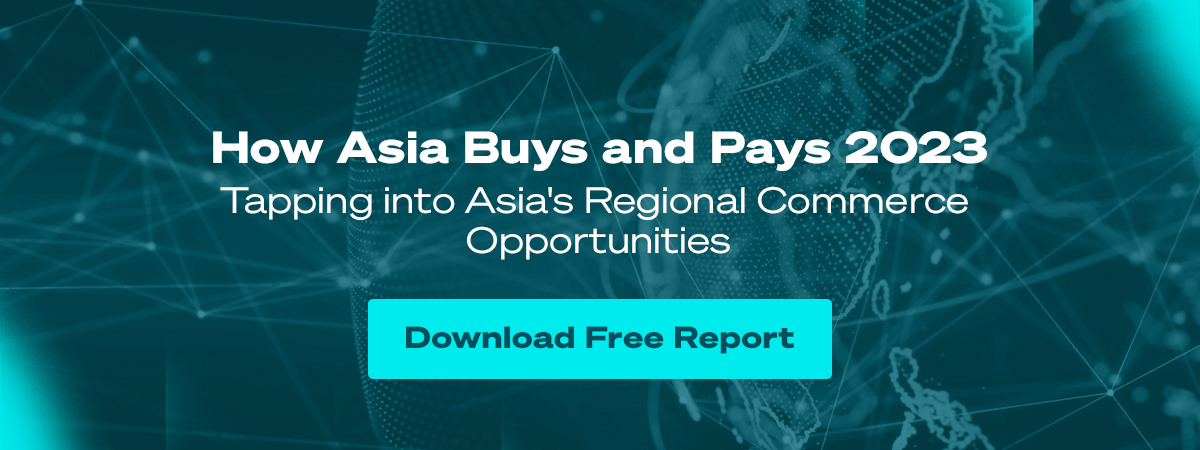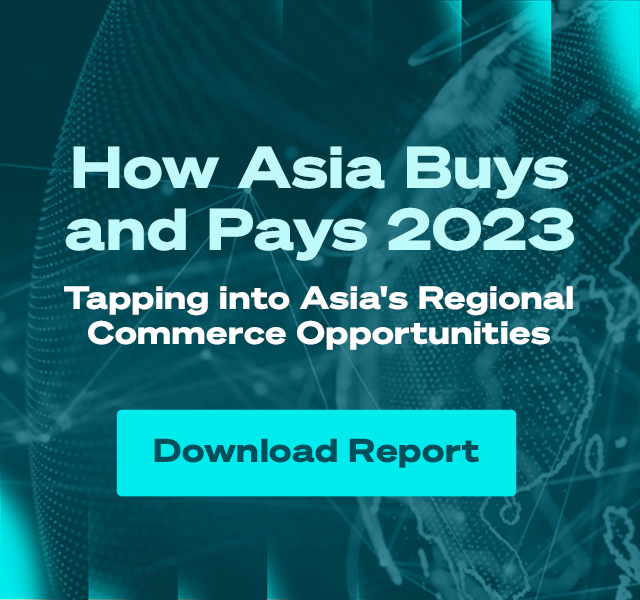
Payments Powerhouses: Driving the Philippines' Digital Payments Transformation
Simon Javier Calasanz, Mastercard’s Country Manager for the Philippines, has built an illustrious career in banking and finance.
He has served as Senior Vice President, Head of Sales, with HSBC Retail Banking and Wealth Management. More recently, Simon was Executive Vice President, Head of Consumer Lending, at Rizal Commercial Banking Corporation (RCBC).
Armed with a digital-first business mindset, Simon is strongly positioned to lead Mastercard’s mission to transform the payments landscape in the Philippines.
Hello Simon! Would you mind sharing a little about your experience in banking and finance?
Simon: I began my career with HSBC 20 years ago in the credit card unit, where I handled everything from operations to credit policy and management information systems (MIS). Eventually, I moved over to the business side, where I got the chance to lead the consumer lending arm of HSBC and later the digital banking unit. During this time, I became a director for BancNet, one of the Philippines’ leading Service organisations, which specialises in ATMs and payments. I was also President and Chairman of the Credit Card Association of the Philippines while in HSBC. After HSBC, I moved to RCBC as President of its credit card-issuing arm, RCBC Bankard.
Three years ago, I had a discussion on consumer lending with one of my professional mentors. At that time, he shared his views that whilst consumer lending was very important, he believed payments would play an increasingly important role in the financial puzzle. And indeed, we started seeing that unfold. In recent years, we have seen the launch of many fintechs focused on solving payment needs for both accepting (on the merchant side) and paying (on the consumer side).
What payment trends do you see emerging in the Philippines?
Let's go back 12 years. The Philippine government had just set up the Credit Information System Act (CISA), an important first step towards building a robust payments ecosystem in the Philippines. Up till that point, credit entities in the Philippines primarily engaged in informal sharing, however, there was a need for a formal credit bureau to help creditors and lenders make decisions on whether to approve or deny someone credit. Therefore, the banks partnered with TransUnion to establish their own credit bureau. The robust credit data delivered by TransUnion, led to reduced delinquency rates with better acceptance, and banks were able to start lending more aggressively.
Credit transactions grew quickly, 10-15% at first, eventually increasing to 20% year-on-year for a particular stretch. Credit growth however, only focused on the upper and middle classes while the government wanted to reach all sectors of society. I think it was around 2015-2016, when the Bangko Sentral ng Pilipinas (BSP) started coordinating with the finance industry to discuss ways to increase payments penetration across the country. This eventually led to the creation of the National Retail Payment System (NRPS), which operated on three core principles: interoperability, inclusivity, and coopetition.
In partnership with organisations like Mastercard, the BSP's digital payments transformation roadmap aims to digitalise 50% of retail payment volume by 2023, and build a financially inclusive, and cash-lite society. Over the years, the number has increased steadily, hitting 20% in 2020.
The biggest catalyst for this growth was COVID-19. People wanted to make transactions from the safety of their homes and thus looked for ways to transact digitally. And with the collective efforts of the industry, we are working towards reaching the BSP’s goal.
How have the underserved and underbanked been affected by digital payments?
Fintech players have been major game changers in the Philippine market, especially in the past three or four years. Many cater to all segments of society, including groups that the more established financial institutions do not target. The fintechs – including the digital wallet players – have played a significant role in driving financial inclusion, not just in terms of lending but also in providing digital payment methods for all sectors.
Can the Philippines become a major payments market in the near future?
Yes, for sure! Many exciting things are going to happen soon. For example, the Philippine government signed the Philippine Identification System (PhilSys) into law in 2018. And according to the latest progress update released as of August 2021, about 27million have completed their registration. PhilSys will support digital payment services moving forward - and as an advocate of the payments digital transformation in the Philippines, this is a topic close to my heart.
It's always a challenge to verify if a person is indeed who they say they are. If the information they provide during application is fabricated, their credit scoring will be worth nothing. So, it's essential to verify the identity of your customers. Having a robust digital and national ID system in the Philippines is a dream come true for me.
How is Mastercard helping to drive digital payments in the Philippines?
Mastercard plays an active role in the Philippines’ digital transformation, and we operate on three main principles: trust, innovation, and inclusion.
On the subject of trust, we focus on addressing barriers to e-commerce and digital payment adoption. In a recent survey, we looked at why Filipino consumers are hesitant to go digital. 79% said that the risk of fraud is the top barrier, while 52% are concerned about saving their payment details on various e-commerce websites. To address these concerns, we are looking into implementing cybersecurity solutions to give our consumers peace of mind. The biggest challenge here is how to minimise fraud, without creating extra barriers and steps for consumers to go through with each transaction.
Mastercard boasts a suite of cybersecurity and intelligence solutions. For example, Mastercard Identity Check™ which is an authentication solution built on the latest EMV-3D Secure standards established by EMVCo. This raises the bar on authentication, providing consumers greater security and a user-friendly digital payment experience that minimises false declines. We also acquired Nu Data in 2017, which enables merchants and issuers to make near-real-time authorisation decisions to confirm user identities through machine learning and behavioural biometrics.
As for innovation, we have partnered with issuers to design more seamless digital payment experiences for consumers, and increasingly new and exciting ways to pay. But this also creates quite a fragmented user experience across payment systems. That's why the ability to support multiple payment types in an interoperable way is key to building a winning strategy. Mastercard provides its customers with a full multi-rail technology stack that includes existing solutions like Mastercard Digital Enablement Solutions. The stack also supports new use cases like QR codes and digital-first solutions that include instant digital card issuance. Acquisitions are also part of the strategy, with Vocalink enabling our ability to partner governments and domestic schemes to offer real-time payment solutions.
Finally, on inclusion, there are a number of initiatives we are working on. In 2019, we partnered with BancNet and BSP to enhance Instapay solutions with our real-time payments technology. Mastercard's Vocalink technology creates a more intuitive customer experience by approving fund transfers using easy-to-remember mobile numbers and email addresses. In September 2021, we enabled person-to-merchant payments (P2M) via Instapay. We have also collaborated with Land Bank to create a companion prepaid card that is issued to every person with a national ID, and they can use this companion card as a financial instrument straightaway.
What challenges do you face when convincing your customers to adopt your solutions?
As with any new technology, it will take time. It’s like romance. When you meet your future wife for the first time, she probably didn't fall in love right away (unless you believe in love at first sight!). But you keep talking every day, and try to convince her to like you. After some time, as long as you are consistent, she realises that, hey, you're the right man for her. I apply this to what we're doing at Mastercard. We try to convince our customers that our solutions can solve their needs and we have the right safeguards to protect them. It will take time, yes, but we'll get there eventually.
Apart from consumer challenges, what regulatory challenges do you expect to emerge?
The BSP has a clear roadmap to drive a cash-lite and eventually cash-free society. So any regulations are designed to benefit Filipinos and achieve a digitally inclusive society for the community.
How would you position the Philippines' progress in the payments landscape compared to other Southeast Asian countries?
Digital adoption in the Philippines has increased from 1% ten years ago to 20% today. While our progress early on was not as quick, we have taken the time to implement infrastructural changes that will take us towards a more widespread scale of digital adoption.
What do you think of CBDCs? Could they potentially change the game in the Philippines' payments landscape?
From what we understand, most central banks are keenly studying CBDCs. As for Mastercard, we have set up a sandbox for relevant experts to play around with CBDCs and see what can be done with them. We look at potential use cases that make the most sense. Can CBDCs be used for trade? Retail? Or perhaps broad-based and cross-border payments? CBDCs are a space we're looking at and will closely monitor over the next couple of years.
What is Mastercard’s stance towards cryptocurrency?
Mastercard’s philosophy on cryptocurrency is simple, it is about choice. As a payments network, our role has always been to enable our users to be able to move value on our rails – whether we are talking about fiat currency, or cryptocurrency. And we will support any digital currency that offers three things: stability, regulatory compliance and consumer protections.
Let's wrap up with some non-finance questions! How do you relax outside of work?
Before COVID-19, I used to work out a lot. I boxed over the weekends, and I was also President of the Arm Wrestling Association of the Philippines. I would manage tournaments and even get together with other arm wrestlers to practice now and then! But with the pandemic, it has become quite hard. Now I spend my Sundays riding my Harley Davidson motorcycle around town.
So you're pretty active in sports. Tell us more!
I used to play football as part of the varsity team in school. I later transitioned into tennis, where I played for my high school senior year and freshman college year in university. I was in Team B, and the players became too good by the time I became a sophomore. So I shifted to martial arts. I practiced jeet kune do, and Sari-an which is a mix of boxing, wrestling, and jujitsu. I eventually transitioned into boxing when I started working. I even joined an amateur boxing competition once! But that was ten years ago. When I worked at RCBC, I got the chance to rekindle my passion for football as the company was part of the Corporate Football League. I joined their football team, and together we won several championships.
The Philippines is well known for its cuisine. So what's your favourite local dish?
I love sinigang! It's a sour soup (usually tamarind or guava base) with lots of vegetables, and you have it with chicken, beef or pork (sometimes even seafood!). I grew to love sinigang because my wife cooks it regularly.
. . .
Payments Powerhouses is a monthly editorial series interviewing the movers and shakers of the payments and wider fintech industry, in Southeast Asia and beyond. If you’d like to be featured on Payments Powerhouses, reach out to us here.

